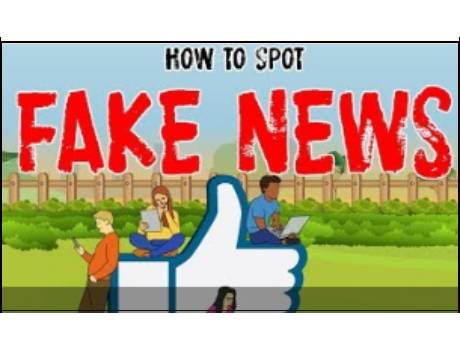
April 11 2020: As the COVID lockdown shows no signs of respite, we're all caught in a fishbowl scenario, trying to make sense of the world around us. Newsfeeds from sources like TV, Whatsapp and social media share a blurry picture indeed, leaving us to sift through real or fake news.
The 10-point checklist promises to give a real sense of what's going on and stop the flow of fake news. How? It covers the following areas:
1. Is it reported by only one news source?
2. Is the news unusual?
3. How is the grammar in the accompanying text?
4. What type of headlines are click-bait.
5. Does the news report contain specifics of date, time, and place?
6. How you can use Google image search to authentic pics
7. Have you checked the source website?
8. Is it an .ru or .co extension?
9. Does it mis-spell a popular news channel?
10. Is the news source authenticated?
"We need to be vigilant of what we see, what we hear and subsequently what we share. Misinformation and fake news are as harmful as the COVID-19 outbreak - practice social distancing here too", said Shakir Ebrahim, the founder of YouTube-based news and current affairs channels, Bisbo.
"Often, fake news items are more focused on sensational tidbits and not on the way the story has been written or composed. So, watch out for obvious mistakes - grammar, poor images, no clear sources, excessive links in the mix and those give-away exclamation marks!" adds Ebrahim.
Each report, in itself, allows readers to judge its authenticity by answering whether it sounds logical in the first place. An extended curfew in today's times seems to be real; 100 people miraculously cured through cow urine does not.
Next, a check for veracity also involves an examination on the content and its sources. A clear origin, names of references cited here, a reverse check on the images, multiple outlets with the same information - these are all ways to prove that it's true. A quality check on the news item is essential too.
An agenda is a warning signal too. Unfortunately, fake news is a deliberate attempt to bring gains to one end or losses to another. BISBO has highlighted that fake news, especially in heightened tensions, can be used to spread fear, hate or violence. Cow lynching, communal tensions and the current spread of fear of succumbing to the outbreak are all examples of this impact of fake news.
We recommend running each message by these rules, and you will be able to sift through the vast mounds of forwards and news reports that would come your way. Still, exercise caution and go through what's happening before you think of sharing it ahead in your groups.
The video, 'Fake news and how to spot it' is an easy 10-point checklist by which any news consumer can figure out whether an event is authentic or not.